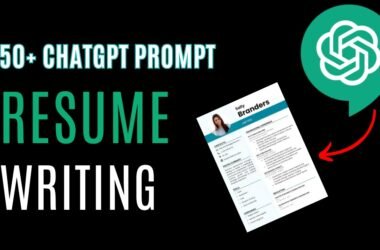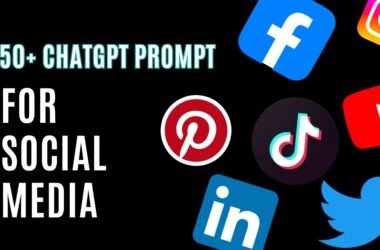Competitive research used to feel like a daunting task, but it doesn’t have to anymore. By using ChatGPT, you can streamline the process and extract valuable insights in minutes. Whether you’re spotting trends or analyzing competitors’ strategies, this tool transforms complex research into simple steps. It’s an easy way to stay ahead without wasting hours digging through data.
Here’s a great video on how to use ChatGPT for competitive analysis to get you started!
Understanding Competitive Research
Success in business doesn’t happen by chance. It requires understanding what others are doing and finding ways to do it better. Competitive research gives you a clear view of the market, helping you stay relevant and innovative.
What is Competitive Research?
Competitive research is about analyzing your rivals’ strategies, strengths, and weaknesses. It’s not just about copying what works; it’s about learning and adapting. By gathering data on pricing, products, marketing, and customer engagement, you get a clear map of the industry landscape. This knowledge gives you the perspective necessary to make informed decisions about your next move.
Think about it like sports. If you want to win, you don’t just focus on your game—you study your opponents too. What are they doing well? Where are they falling short? With competitive research, you’re doing the same in the business world.
Why is it Important?
Competitive research can feel like a luxury, but it’s not—it’s a necessity. Why? Because staying stagnant is not an option when others are innovating. Here’s what competitive research can do for your business:
- Spot market trends early: Understand what’s changing to adapt your offerings accordingly.
- Identify gaps in the market: Find opportunities your competitors have overlooked and turn them into strengths.
- Shape better strategies: Make data-driven decisions instead of guessing what works.
- Track your progress: Measure how your efforts stack up against others in the market.
Think of competitive research as your guide. It helps you avoid walking blindly and shows you what’s worth paying attention to.
How ChatGPT Transforms Competitive Research
Uncovering what your competitors are up to doesn’t have to feel overwhelming. ChatGPT serves as a digital assistant that simplifies the process, helping you focus on strategic actions instead of drowning in data. Let’s explore how it changes the game for competitive research.
Efficient Data Collection
Traditionally, gathering data about competitors meant hours of poring over reports, analyzing websites, or subscribing to numerous newsletters. With ChatGPT, data collection gets a lot easier. You can input targeted prompts and get valuable details without having to sift through piles of Google searches. Want to know what your competitor’s customers are saying? You can ask for an analysis of online reviews or social media chatter. Trying to compare pricing strategies? ChatGPT can pull together a quick summary of pricing data from public sources.
The beauty of this approach? You’re no longer spending unnecessary time on manual tasks. Instead, you can redirect your energy to understanding the bigger picture and planning your next move.
Generating Actionable Insights
Raw data is great, but insights are what drive decisions. ChatGPT doesn’t just gather information—it helps you make sense of it. The tool can analyze trends and patterns, breaking complex data into bite-size chunks you can act on immediately.
For instance, let’s say you’re trying to figure out why a competitor’s product is outperforming yours. Feed ChatGPT the details you have, and it might reveal something you overlooked—like a pricing gap or a standout feature customers are loving. It’s like having a brainstorming partner that works in overdrive, helping you uncover opportunities you didn’t even know existed.
Insight is the difference between knowing and doing. With ChatGPT, generating those insights feels effortless.
Speeding Up the Research Process
Time is a luxury, and research can eat up a lot of it. The good news? ChatGPT slashes the time it takes to collect and analyze data. By asking very specific, well-crafted prompts, you can get results in seconds that might take a human researcher days—or even weeks.
Think of it like using a power tool instead of a hand saw. Sure, you could do the task the traditional way, but why would you when you can save time and get even better results? This speed doesn’t just help with efficiency—it also ensures you can respond to market changes in real-time.
The faster you can complete your research, the quicker you can implement the strategies that will keep you ahead of the competition.
Crafting Effective Prompts for Competitive Research
Prompts shape the way ChatGPT provides responses, making them a critical tool in competitive research. A well-crafted prompt not only ensures relevant data but also maximizes efficiency, saving you time and effort. If you’ve ever felt like your outputs were too vague or unhelpful, chances are the issue wasn’t the tool—it was the inputs.
Basic Prompt Structure: Outline What a Solid Prompt Should Include
Writing a good prompt is like framing a question for an expert. If you ask the wrong question or provide incomplete details, you can’t expect an answer tailored to what you need. Here’s what to keep in mind:
- Be specific: Instead of asking, “What is my competitor doing?” ask, “What marketing channels does [Competitor Name] prioritize?”
- Add context: Briefly explain what you’re trying to achieve. For example, “Identify the strengths and weaknesses of [Competitor Name]’s social media strategy.”
- Set clear boundaries: If you only want recent data, include phrases like “Analyze trends over the last 6 months.”
- Request a structured response: If you prefer bullet points, categories, or comparisons, specify that in your prompt.
Using these elements increases your chances of receiving detailed, actionable responses tailored to your needs.
Examples of Effective Prompts: Provide Specific Prompt Examples to Use
If you’re not sure what a good prompt looks like, here are some examples specifically designed for competitive research:
- “List three strengths and three weaknesses of [Competitor Name]’s recent email campaigns.”
- “What features differentiate [Competitor A’s Product] from [Competitor B’s Product]?”
- “Identify three key trends in [industry] based on public reviews from the last quarter.”
- “Analyze [Competitor Name]’s pricing strategies for their subscription model in [specific region].”
- “Compare the customer engagement metrics for [Competitor A] and [Competitor B] on Instagram.”
When you use specific prompts like these, you eliminate the guesswork, allowing ChatGPT to deliver the most relevant insights. For additional inspiration on structuring such prompts, check out content related to customer service strategies with AI.
Iterating on Responses: Explain How to Refine Prompts for Better Outcomes
Even with a strong starting point, your first attempt may not yield perfect results. Think of prompts as a conversation. If the first answer is off the mark, refine your question to clarify what you’re looking for.
- Start with broad prompts: Begin by asking general questions to get an overview. For example, “What are some common tactics used by [Competitor Name]?” From there, focus on specific areas like pricing or social media.
- Use feedback loops: If the response isn’t detailed enough, ask follow-up questions or tweak the original prompt. Add phrases that direct the AI to provide more depth, like “Provide examples” or “Include specific case studies.”
- Experiment with phrasing: Sometimes, changing just a single word or the tone of your prompt can lead to better results. For example, “List” might work better than “Describe,” depending on the context.
- Set expectations for tone and format: Specify if you need summaries, statistics, or comparisons.
Approaching refinement as an ongoing process ensures you’re always extracting the most helpful insights possible. Remember, better prompts lead to better answers, and every tweak moves you closer to uncovering golden opportunities.
Case Studies of ChatGPT in Action
ChatGPT has shown its impact across various industries, offering practical solutions to real challenges. These examples make it clear how businesses are leveraging its capabilities to streamline tasks, improve efficiency, and enhance customer experiences. Let’s look at a few standout stories and the lessons we can take from them.
Businesses that Benefited: Share stories of companies successfully using ChatGPT
Several companies have successfully integrated ChatGPT into their workflows, seeing both immediate results and long-term gains. Here are just a few examples:
-
Customer Support Automation: A mid-sized e-commerce company reduced their response time by deploying ChatGPT for customer service. Customers reported greater satisfaction due to faster and accurate responses to their queries. This freed up their human agents for more complex cases.
-
SEO Optimization in Digital Marketing: One digital agency used ChatGPT to create compelling meta descriptions and optimize landing pages. It significantly boosted their clients’ website traffic and search rankings by improving relevance and clarity of online content.
-
Product Descriptions for E-commerce: Many online retailers are tapping the tool for writing product descriptions. A European retailer reported their catalog updates, which typically took weeks, were completed in two days using ChatGPT.
-
Recruitment Processes: A recruitment firm shortened its candidate-screening time dramatically. By using ChatGPT to craft tailored emails and review applications, they optimized communication and selection processes.
These case studies showcase the versatility of ChatGPT in different business scenarios, proving that its potential is practically endless.
Lessons Learned: Discuss key takeaways from these case studies
From these examples, there are clear patterns that emerge about using ChatGPT efficiently:
-
Task-Specific Implementation: The success stories highlight a focused approach—businesses used ChatGPT for targeted tasks like customer service or marketing copy. Concentrating it on a narrow objective often yields better results than trying to solve everything at once.
-
Efficiency Amplifier: ChatGPT isn’t replacing people; it’s amplifying their productivity. Whether speeding up time-consuming tasks or offering insights, it acts as a multiplier for human effort.
-
Initial Investment Pays Off: Time spent creating clear, structured processes for ChatGPT’s use often comes back tenfold. The more precise the input (in this case, prompts), the more valuable the output.
-
Not a One-Size-Fits-All Solution: While its use cases are broad, customization is critical. The businesses that saw the most success tailored ChatGPT responses to align with their goals and industry nuances.
If you’re looking to understand more about crafting effective applications of AI, consider exploring resources on working smarter with AI tools. These lessons show how ChatGPT transforms from just a helpful tool into a competitive asset.
Real businesses aren’t just saving time—they’re shifting how they operate. What could integrating ChatGPT do for your industry?
Future of Competitive Research with AI
Artificial Intelligence is redefining how we approach competitive research. Tasks that once required hours of manual effort can now be streamlined with smart tools. The possibilities are endless, from identifying trends to uncovering hidden opportunities, making AI not just an optional upgrade but a necessary tool for businesses aiming to stay competitive.
Emerging Trends: Highlight trends in AI research tools
AI research tools are evolving fast, reshaping industries as they do. Here are some emerging trends:
- Predictive Analytics: Many tools now forecast market trends by analyzing historical data. This allows businesses to anticipate changes and adapt.
- Behavioral Insights: AI can study customer behavior in ways humans can’t. Tools are tracking patterns and creating actionable insights.
- Natural Language Processing (NLP): With tools like ChatGPT, NLP is enabling deeper analysis of competitors’ content and brand strategies.
- Real-Time Monitoring: Traditional research often lags behind. AI tools now offer real-time updates on competitors, keeping you in the loop at all times.
- Customizable Dashboards: Modern tools allow you to personalize metrics and reports. This flexibility ensures you focus only on what matters most to your goals.
Keeping an eye on these shifts will give you a head start in reaping the benefits of this technology.
Preparing for Changes: Guide on adapting to new AI tools
Adapting to new AI tools doesn’t have to be overwhelming. In fact, it can be a smooth process when you approach it strategically. Here’s what I would recommend:
- Start Small: Don’t try to implement everything at once. Focus on one or two aspects of your research, like competitor analysis or trend forecasting.
- Train Your Team: Ensure your team understands the tool. Offer workshops if needed. Familiarity enhances productivity.
- Experiment and Iterate: Test the tool in small batches before committing fully. This saves time and resources.
- Stay Informed: AI tools are constantly updated. Keep an eye on new features or add-ons that could further optimize your workflow.
- Measure Impact: Track the tool’s performance against your traditional methods. This helps you see the ROI clearly.
Transitioning to AI doesn’t mean discarding your intuition and expertise. It’s about combining human intelligence with machine efficiency to solve problems faster.
Conclusion
Mastering competitive research is no longer a hassle with tools like ChatGPT. It simplifies data gathering, sharpens your insights, and saves you time. Transform what used to be a tedious process into an efficient, strategic advantage.
Ready to step up your game? Experiment with specific prompts to unlock better results for your business. Whether you’re spotting market trends or analyzing competitors’ strengths, this tool has you covered.
What’s next for your competitive strategy? Don’t wait. Dive into the possibilities ChatGPT can offer today!



